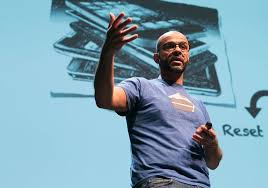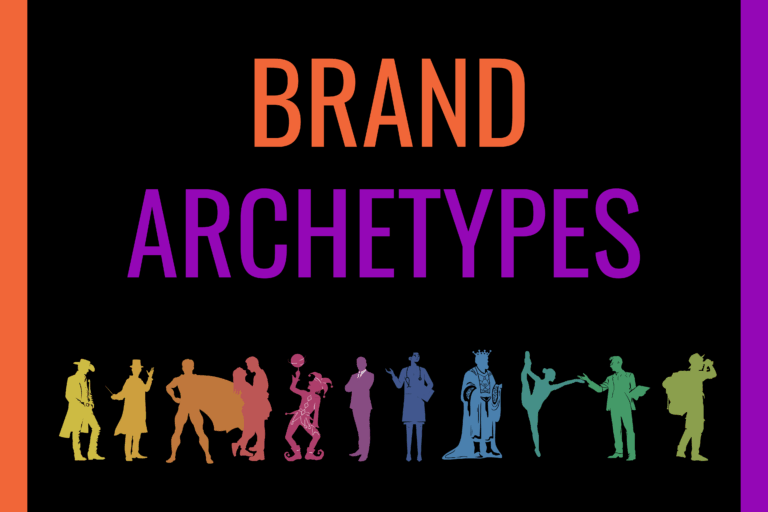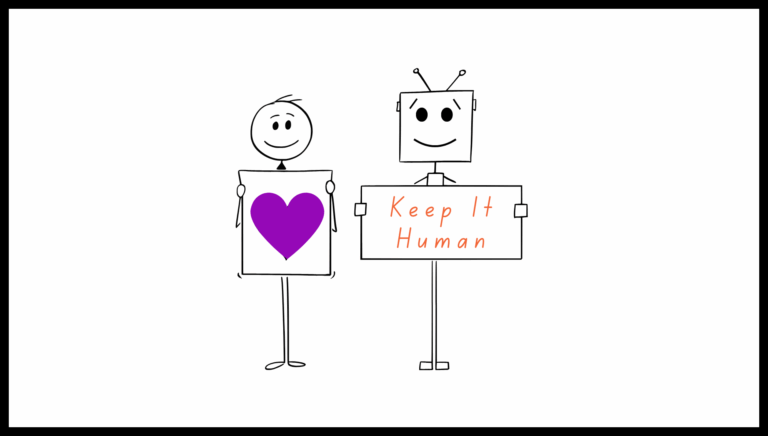by Kelly King
In my last article, I explored why empathy and authenticity are essential in the AI age. Today, I want to dive into the future role of marketers working with AI.
The Numbers Don’t Lie
A recent McKinsey report estimates that gen AI could contribute up to $4.4 trillion in annual global productivity. (McKinsey & Co.) According to the analysis, marketing and sales are one of four functional groups that combined could reap an estimated 75 percent of that value. The productivity of marketing alone, due to general AI, could increase by 5 to 15 percent of total marketing spend, worth approximately $463 billion annually.
Yikes.
The Questions Everyone’s Asking
Marketing students are worried. Industry marketers are scrambling. Professors and teachers are sprinting to update their curricula and keep up with all the latest AI tools. As someone teaching the next generation of marketers while running an AI-integrated agency, I’m living the future of marketing education and practice simultaneously. Here’s what I’m hearing from both sides:
- What AI skills do I need to know to get hired?
- What do I need to teach to prepare my students for their careers?
- What is marketing management going to be like in 2, 5, or 10 years?
- What positions will be available?
- Do I need to know how to create GPTs and Agents?
- Can AI create our content for us?
- What AI tools are the best for image generation? Writing? Video? Customer service? Website design? Data analysis? Marketing research? Creating personas?
- Are human marketers still valuable?
- How can I stay valuable to my company?
These are serious questions that we need to discuss and find the answers to so we can write the playbook for the “new and improved marketer – now with AI!”
AI vs. The Internet: This Time It’s Different
I was an early adopter of AI. I started using ChatGPT in December 2022 and immediately had the “Holy Cow!” moment when I recognized the enormity of this technology’s potential, both good and bad. Like many Gen Xers and Boomers, I made the comparison to the launch of the internet. I remember attending website development courses in 1996, learning to code HTML, and getting excited about creating an animated GIF.
The internet was like a tidal wave of change. What’s different about AI is that this wave is much bigger and coming faster. AI is a tsunami of disruption in every industry and in our personal lives. The impact of the advancements in AI over the past two years is overwhelming, exciting, and downright scary.
This time, we can’t wait and think about it. Remember those laggard companies that took forever to develop a website? We must embrace the notion that AI is here to stay. There’s no putting the genie back into the bottle.
The Struggle to Keep Up
So, what do we do?
If you’re at all like me, you’re feeling behind. I have a list of certificates and badges from training over the past two and a half years, but many already seem outdated. I’m scrambling to keep up with the exploding selection of AI tools, LLMs and protocols for best practices to get the most out of these incredible “machines.”
The pressure to stay current and relevant is real. As a lecturer, I’ve had to revise my assignments three times in 18 months, not because marketing fundamentals have changed, but because the way we apply them has been revolutionized.
Beyond preventing brain rot and cheating, I am obligated to prepare my students for their future careers in marketing. That’s become an incredible challenge because we don’t know what marketing will look like in five years or even two years. It has already changed dramatically.
How We’re Using AI at 80/20 Agency
At 80/20 Agency, AI is particularly helpful for executing our content strategies. Tools like ChatGPT, Gemini, and Claude act as creative partners who can pressure-test campaign concepts, identify blind spots, and connect abstract ideas to actionable tasks. Additionally, with proper prompting, we’re able to generate clever copywriting and ideas we could have never thought of on our own.
Last month, we developed a four-part newsletter series for a local non-profit. AI helped refine the content and structure so that it could work as a template that the non-profit staff could easily customize and use for ongoing editions.
“AI without a human-led strategy is like a muscle without bones. It’s functional, but can’t stand on its own or move with purpose. But with a well-designed skeleton (a solid strategic framework) AI can build beautiful muscle around the bones that allows you to execute your strategy more efficiently. The key is that AI does not build the skeleton by itself.” –Alex Coniaris, Brand Strategist & Content Lead, 80/20 Agency
Our team is aware that these tools will continue to evolve or be replaced. Almost daily, we discover and evaluate a new tool. So, we cannot get comfortable.
Introducing: Human Leaders in the Loop
The approach I am taking for myself, my agency team, and my students is to embrace a framework I’m calling HUMAN LEADERS IN THE LOOP. Human Leaders in the Loop isn’t about humans competing with AI—it’s about humans orchestrating AI teams to create marketing that resonates on a deeply human level. In other words, it’s an approach that must include the human element.
The magic that the marketer brings is the personal experiences, human emotions, and human connections, as well as knowledge about human consumers.
My 6 Predictions for the Future of Marketing
1. Marketers will be leading a hybrid team of AI tools and human specialists that will run the AI tools.
2. We are going to see exponentially more AI-generated content as McKinsey estimates generative AI could boost marketing productivity by 5-15% of total marketing spend, worth $463 billion annually. (McKinsey & Co.) Some AI-generated ads will be cringe, while others might be decent and even quite impressive. However, the content that will truly resonate most with consumers will include real people who are relatable.
3. AI Influencers are going to explode. They are already here. More on that in another newsletter.
4. AI will be the new customers. With the emergence of agents making purchases, marketers will need to appeal to AI algorithms to be found and provide information that makes their product the recommended choice by AI. This means SEO becomes ‘AIO’ – Artificial Intelligence Optimization.
5. To add this “human value,” marketers will need to be pros at empathy, compassion, trends, and creating brand communities.
6. Even more, marketers will need to be adaptable and resilient. We will need to embrace the concept of failing fast as we test and evaluate the new tools. Our role is not to conquer specific tools to define our AI stack for marketing over the next five years, but instead, to agree on a pool of tools for a short timeframe and then replace or adjust as new tools are introduced or upgraded.
The Four Pillars for Human Leaders in the Loop
So how do we implement this human-centric approach? Here are the four pillars that guide my framework.
1. Authenticity
Make a commitment to align your brand content and messaging to your brand values and your customers’ needs. Include real people, real quotes, and real events for better engagement. At 80/20, we use customer interviews as our secret sauce for authentic branding and storytelling. Long-form interviews can be edited into multiple pieces of content and repurposed across social platforms, included in email blasts, and featured on the company website.
2. Transparency
Disclose when you use AI to prevent losing your consumer’s trust. Customers are willing to accept brands using AI as long as they are informed. AI chatbots and avatars for customer service are super helpful, extremely knowledgeable, fast, and efficient. Plus, they never get upset, tired, or have a bad day. They can also speak multiple languages. When the use of AI is not disclosed, the customer feels like they are being duped.
3. Emotion
Just because AI can create a video of a “happy person” doesn’t mean your audience will actually feel happy watching it.
Real emotion in marketing is about creating genuine human moments that audiences can connect with. Kendra Hall calls this authentic emotion, one of the four key components of brand storytelling (Stories That Stick, 2019), and it can only come from real human experiences that spark empathy.
Think about Doc Morris’s viral 2020 Christmas ad, where a grandfather lifts weights so he can pick up his granddaughter. You don’t get emotional because the actors look sad or happy. You get choked up because the story captures something deeply human that anyone can relate to.
In this context, AI could’ve helped brainstorm shot ideas for the video, develop call-sheets for the crew, and even plan a social media campaign around the concept. But only humans can create the experiences that generate genuine emotional responses.
4. Safety & Ethics
The fourth pillar, which I believe is most important for Human Leaders in the Loop, is to lead AI on safety, security & ethics. Sadly, this is not the priority of some of the popular LLM and AI software developers. AI experts who have been studying AI for decades, such as Geoffrey Hinton, Mo Gawdat, Ilya Sutskever, and Dr. Roman Yampolskiy, are sounding the alarm bells to slow down and set more guardrails.
It’s a critical time for marketers to lead more than ever. Before AI reaches Artificial General Intelligence (AGI), we must take charge by setting the guardrails and constraints for these AI tools.
This gets into a much broader topic than marketing, but marketers can influence the rate of adoption of many of these tools by asking key questions. Here are some key questions every marketer should ask their AI vendors:
- Where is your training data sourced?
- Does your platform learn from our proprietary inputs and the outputs it generates?
- What data security certifications do you maintain?
- How do you handle bias detection and mitigation?
Marketers have significant purchasing power, and our purchasing decisions can have a profound impact on our world.
Ready to Get Started?
Ready to implement Human Leaders in the Loop?
Start with an audit: Review your last 10 pieces of content and ask, Would my audience know the human insight behind this? If not, you’re missing the human element that creates a real connection.
What’s Your Take?
My intention is not to write another article about the dangers of AI, but to invite you to join me in evaluating this perspective and to continue the conversation. The purpose of this article is to share ideas, inspire, and support each other. If this resonates with you, please join this conversation as we navigate these unknown waters and ride this tsunami together.
Keep It Human,
Kelly
Written by a human, polished with AI.



